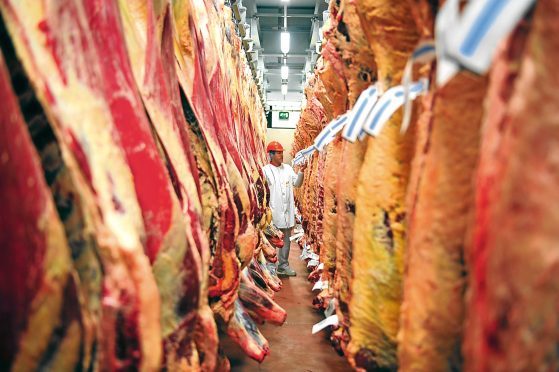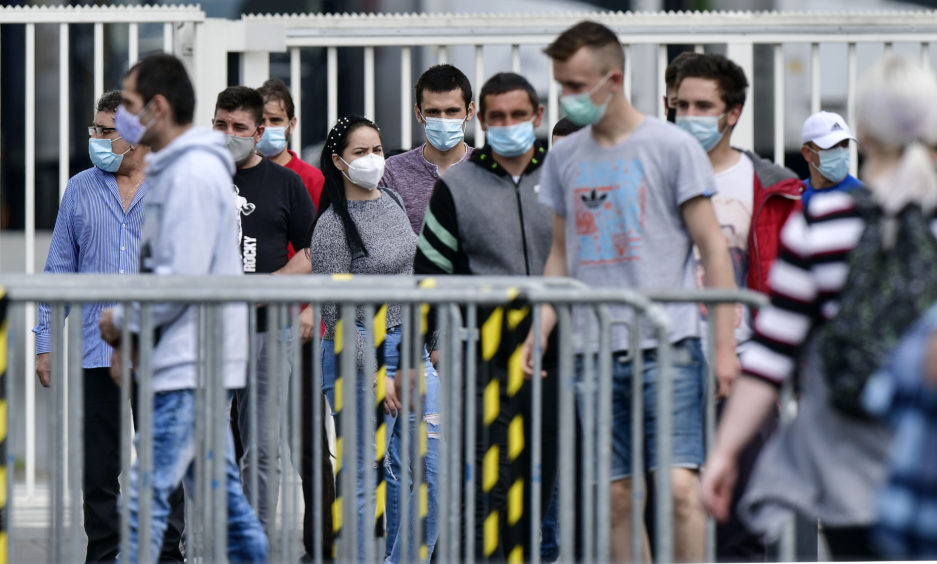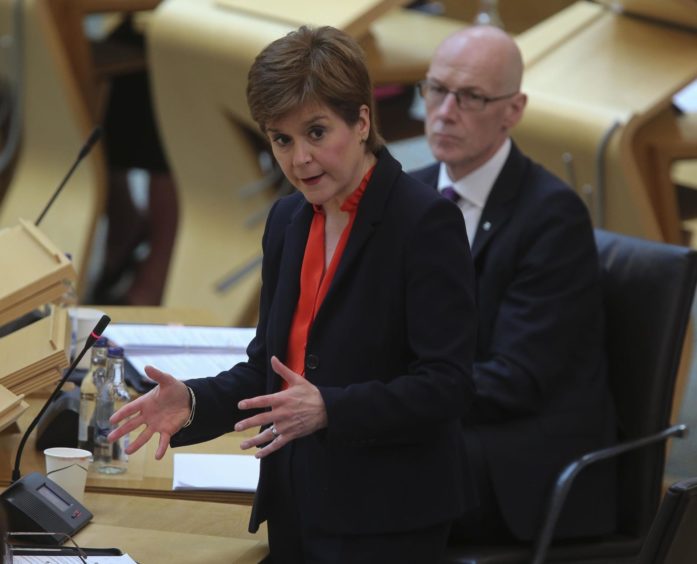Slaughterhouses and meat processing factories in Scotland have been given “comprehensive guidance” in light of coronavirus outbreaks at similar facilities around the world.
First Minister Nicola Sturgeon said Food Standards Scotland has “maintained a presence” at all of the country’s abattoirs and worked with the industry on safety measures to reduce the risk of infection transmission.
Europe’s largest meat processing factory suffered a Covid-19 outbreak that resulted in approximately 7,000 people being quarantined in Germany, while 200 confirmed cases have been linked to an outbreak at a Welsh meat factory.
Speaking during First Minister’s Questions, Ms Sturgeon said the sector in Scotland will have to remain “extremely vigilant” to prevent the spread of coronavirus.
She said outbreaks of the virus in other meat processing factories, such as those reported in Germany, will be assessed “to make sure that we can learn any appropriate lessons”.
Food Standards Scotland has also maintained a presence in all 27 Scottish slaughterhouses and has worked with meat cutting plants through the outbreak, agreeing physical distancing protocols and ways of working to protect the health and safety of staff.”
First Minister Nicola Sturgeon
“This is a really important issue in light of some developments in other parts of the world,” the First Minister told MSPs.
“Food Standards Scotland has provided comprehensive guidance and a risk assessment tool to help the food industry ensure their staff are protected from the risk of Covid-19.
“The guidance supports them in implementing physical distancing, personal hygiene and cleaning, and disinfection measures to prevent transmission in food production settings, including meat processing facilities, while maintaining high standards of food safety.”
She added: “A significant number of measures have been introduced, such as increased cleaning and disinfection, screens on production lines and physical distance marshals.
“Food Standards Scotland has also maintained a presence in all 27 Scottish slaughterhouses and has worked with meat cutting plants through the outbreak, agreeing physical distancing protocols and ways of working to protect the health and safety of staff.”
The Scottish Association of Meat Wholesalers (SAMW) president, Andy McGowan, said: “We have been working closely with Scottish Government and Food Standards Scotland officials throughout the pandemic, seeking and acting on their expert advice on how to keep our staff safe while continuing to provide the nation’s consumers with essential meat supplies.
“Member plants have been not been significantly affected by staff absences related to self-isolation or symptomatic employees and have been able to carry on producing Scotch beef and lamb, and Specially Selected Pork.
“In-plant social distancing and PPE requirements have been followed rigorously by all member companies, with production lines and processes being slowed to accommodate vital spacing between workers and to apply all necessary cleaning, sanitisation, and hygiene regulations.
“Typical protective measures, in common with all other food processing plants, have included the furloughing of staff, or working from home wherever possible; provision of increased sanitiser points within plants, floor markings for social distancing, increased canteen size, spaced-out tables, time separation and face coverings for serving staff, screens/curtains installed where necessary in boning halls, and improved facial coverings and visors.
“Monitoring of staff health in relation to the pandemic continues to be carried out on a daily basis to ensure any slight rise in cases is identified and addressed immediately.”












